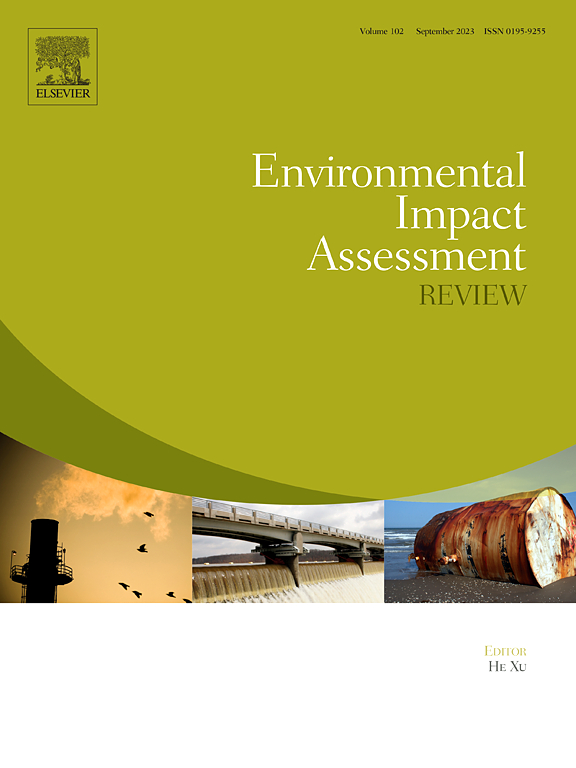量化再利用废弃工业建筑对环境影响的公共价值
IF 9.8
1区 社会学
Q1 ENVIRONMENTAL STUDIES
引用次数: 0
摘要
在全球环境恶化和能源危机的背景下,废弃工业建筑的再利用项目因其可持续性和环境效益而成为实现能效目标的更有效途径。然而,它的社会接受度仍然是一个值得进一步研究的话题。在重用阶段,我们采用自底向上的方法收集了有关aib的离散能量和资源信息。从生态系统破坏、资源和能源消耗、人类健康损害等方面筛选了7个环境影响类别,评价了垃圾回用的实际环境影响。采用支付意愿(WTP)和距离-目标耦合方法来确定中国社会接受AIB再利用项目的意愿。结果表明:不同环境影响类型的WTP存在显著差异,化石燃料消耗的WTP最低(577.082 RMB/m2),臭氧消耗潜力的WTP最高(3.542∗10−3 RMB/m2)。此外,对建筑构件和材料的对比分析发现,钢筋混凝土的WTP明显低于钢结构,楼板的环境效益低于其他构件。本研究创新性地从环境影响的角度探讨了在中国推广废旧建筑再利用的可行性和适宜性。这些发现有助于考虑AIB再利用中不同生命周期指标对决策的支持程度,并有助于简化生命周期评估在既有建筑改造领域的应用。本文章由计算机程序翻译,如有差异,请以英文原文为准。

Quantifying the public value of the environmental impact of reusing abandoned industrial buildings
In the global context of environmental degradation and energy crises, projects to reuse abandoned industrial buildings (AIBs) have become a more effective way to achieve energy efficiency goals because of their sustainability and environmental benefits. However, its societal acceptance is still a topic that deserves further research. We collected discrete energy and resource information on AIBs during the reuse phase taking a bottom-up approach. Seven environmental impact categories were screened in terms of ecosystem damage, resource and energy depletion, and human health damage to evaluate the actual environmental impacts of AIB reuse. The Willingness to Pay (WTP) and distance-to-target coupling methods were used to determine the willingness of Chinese society to accept AIB reuse projects. The results show that there is a significant difference in WTP between different environmental impact categories, with fossil fuel depletion having the lowest WTP (577.082 RMB/m2) and ozone depletion potential having the highest WTP (3.542 ∗ 10−3 RMB /m2). Additionally, comparative analyses of building components and materials found that reinforced concrete had a significantly lower WTP than steel structures and floor slabs had a lower environmental benefit than other components. This study innovatively explores the feasibility and appropriateness of promoting AIB reuse in China from an environmental impact perspective. These findings can help to consider the extent to which different life cycle indicators in AIB reuse support decision-making and help to streamline the application of life cycle assessment in the field of renovation of existing buildings.
求助全文
通过发布文献求助,成功后即可免费获取论文全文。
去求助
来源期刊

Environmental Impact Assessment Review
ENVIRONMENTAL STUDIES-
CiteScore
12.60
自引率
10.10%
发文量
200
审稿时长
33 days
期刊介绍:
Environmental Impact Assessment Review is an interdisciplinary journal that serves a global audience of practitioners, policymakers, and academics involved in assessing the environmental impact of policies, projects, processes, and products. The journal focuses on innovative theory and practice in environmental impact assessment (EIA). Papers are expected to present innovative ideas, be topical, and coherent. The journal emphasizes concepts, methods, techniques, approaches, and systems related to EIA theory and practice.
 求助内容:
求助内容: 应助结果提醒方式:
应助结果提醒方式:


